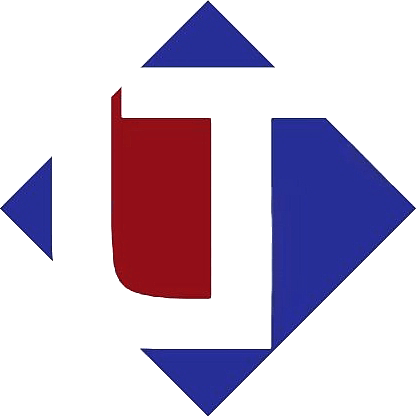Six-Axis CNC Shearing Machine for Copper and Aluminum Busbars: Automatic Calculation of Cutting Length and Waste Optimization Based on Drawings
Introduction
In the processing of copper and aluminum busbars, material waste has always been a key issue in production efficiency and cost control. Traditional shearing processes often rely on manual estimation and experience, making it difficult to minimize waste and potentially leading to unstable product quality. With the continuous development of CNC technology and intelligent manufacturing, the six-axis CNC automatic shearing machine has emerged. It can automatically calculate the cutting length based on design drawings and generate the optimal waste-minimizing shearing plan, significantly improving processing accuracy, reducing material waste, and effectively enhancing production efficiency. This article will explore the application features and advantages of the six-axis CNC shearing machine in copper and aluminum busbar processing.
1. Working Principle of the Six-Axis CNC Automatic Shearing Machine
The six-axis CNC automatic shearing machine is based on advanced CNC technology and uses six independent axes to perform complex 2D and 3D shearing motions. Compared with traditional four-axis or five-axis machines, the six-axis CNC shearing machine allows for high-precision shearing actions in a more flexible spatial environment, greatly improving processing flexibility. Its working principle includes:
- Automatic Recognition of Drawings: After the user designs drawings using AutoCAD, SolidWorks, or other CAD software, the six-axis CNC shearing machine directly reads and interprets these files via an interface. These design files include nesting plans, dimensional data, and shearing sequences, and the system automatically generates processing paths and plans.
- Automatic Calculation of Cutting Length: The system intelligently calculates the optimal cutting length based on the content of the drawings and the dimensions of the workpieces. This not only reduces material waste but also improves production efficiency.
- Waste Optimization Management: The machine uses optimization algorithms to automatically calculate the cutting plan that generates the least waste. For each copper and aluminum busbar processing task, the system adjusts the shearing sequence and path to minimize waste generation.
- High-Precision Shearing: The six-axis CNC system offers higher precision and flexibility, ensuring minimal dimensional errors during shearing and thus guaranteeing the final product quality.
2. Processing Characteristics and Challenges of Copper and Aluminum Busbars
Copper and aluminum busbars are widely used in the power, communication, and electronics industries due to their excellent conductivity, corrosion resistance, and strong mechanical properties. However, during the processing of copper and aluminum busbars, the following challenges are often encountered:
- Material Waste: Traditional manual cutting plans often fail to minimize waste, leading to higher costs.
- Complex Processing Requirements: The shapes, sizes, and hole positions of copper and aluminum busbars are diverse, requiring precise shearing processes and accurate control.
3. Advantages of CNC Automatic Shearing Machines in Copper and Aluminum Busbar Processing
3.1 Improved Cutting Precision and Reduced Waste
The six-axis CNC automatic shearing machine receives CAD drawings from design software (such as AutoCAD or SolidWorks) and automatically reads the dimensions and shapes of the workpieces. The system calculates the optimal cutting length based on the drawings, eliminating errors caused by manual measurements and reducing unnecessary waste. This not only saves materials but also lowers production costs.
3.2 Optimized Waste Management
Waste management is a critical issue in the shearing process of copper and aluminum busbars. The six-axis CNC system uses advanced nesting algorithms to generate the cutting plan with minimal waste for each order. These algorithms consider the size, shape, shearing sequence, and cutting method of the busbars, automatically adjusting the cutting path to maximize material utilization.
3.3 Enhanced Production Efficiency
The high degree of automation in the six-axis CNC system reduces manual intervention and improves production efficiency. The equipment can operate continuously, automatically completing shearing tasks and shortening production cycles. Additionally, the system can perform multi-station punching and compound processing, further enhancing efficiency.
3.4 Improved Processing Quality
The six-axis CNC shearing machine achieves high-precision shearing operations, minimizing human errors and ensuring stable processing quality for copper and aluminum busbars. The equipment can monitor the processing in real-time and automatically adjust operating parameters to accommodate changes in materials and processing conditions, ensuring cutting precision and surface quality.
3.5 Reduced Equipment Maintenance Costs
Traditional manual operations and inefficient machines require frequent adjustments and maintenance. The six-axis CNC automatic shearing machine, however, uses advanced CNC technology and intelligent monitoring systems, significantly reducing equipment failure rates and lowering maintenance costs. Additionally, the efficient operation of the equipment reduces labor costs.
4. Future Development Trends
With the continuous advancement of intelligent manufacturing technology, the six-axis CNC automatic shearing machine will play an increasingly important role in copper and aluminum busbar processing. Future developments may include:
- Integration of Artificial Intelligence and Big Data Analysis: AI algorithms and big data analysis will be used to further optimize waste management, processing techniques, and equipment operation, achieving full automation and intelligence in the production process.
- Adaptability to More Materials: As other metal materials (such as titanium alloys, stainless steel, etc.) are used alongside copper and aluminum busbars, the adaptability of the six-axis CNC shearing machine will continue to improve, meeting broader market demands.
- Integration with Collaborative Robots (Cobots): In the future, the six-axis CNC shearing machine may be integrated with collaborative robots to create a more intelligent production process, enhancing the automation and flexibility of the production line.
Conclusion
As an efficient and precise processing tool, the six-axis CNC automatic shearing machine plays a crucial role in copper and aluminum busbar processing. By deeply integrating with modern design software, it can automatically calculate cutting lengths based on drawings and generate optimized waste-reduction plans. This not only improves production efficiency but also reduces material waste, significantly enhancing the precision and quality of copper and aluminum busbar processing. With the continuous development of technology, the six-axis CNC shearing machine will occupy an increasingly important position in the future of intelligent manufacturing.
